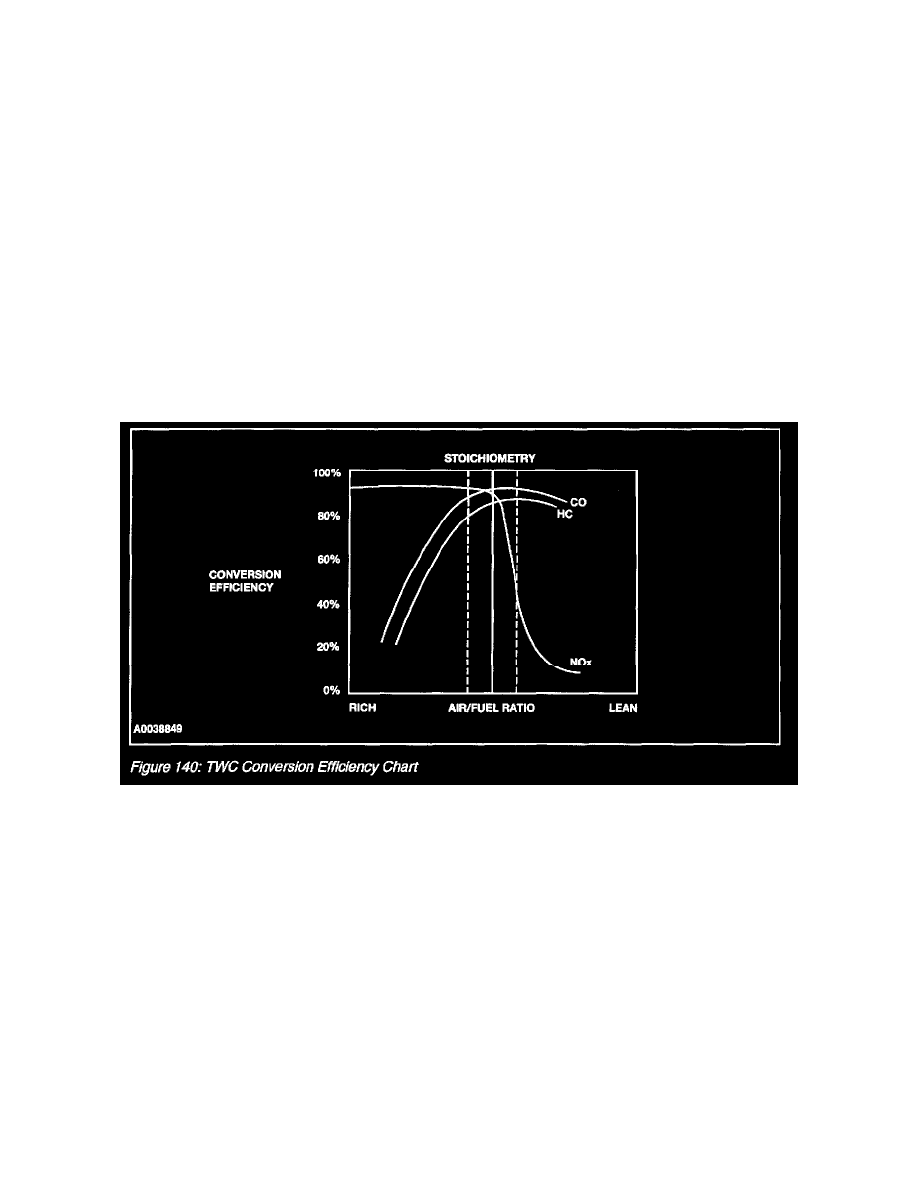F 250 4WD Super Duty V10-6.8L VIN Z CNG (2003)

Catalytic Converter
A catalyst is a material that remains unchanged when it initiates and increases the speed of a chemical reaction. A catalyst will also enable a chemical
reaction to occur at a lower temperature. The concentration of exhaust gas products released to the atmosphere must be controlled. The catalytic
converter assists in this task. It contains a catalyst in the form of a specially treated ceramic honeycomb structure saturated with catalytically active
precious metals. As the exhaust gases come in contact with the catalyst, they are changed into mostly harmless products. The catalyst initiates and
speeds up heat producing chemical reactions of the exhaust gas components so they are used up as much as possible.
Light Off Catalyst
As the catalyst heats up, converter efficiency rises rapidly. The point at which conversion efficiency exceeds 50% is called catalyst light off. For most
catalysts this point occurs at 475 to 575°F (246 to 301°C). A fast light catalyst is a three way catalyst (TWC) that is located as close to the exhaust
manifold as possible. Because the light off catalyst is located close too the exhaust manifold it will light off faster and reduce emissions quicker than
the catalyst located under the body. Once the catalyst lights off, the catalyst will quickly reach the maximum conversion efficiency for that catalyst.
Three-Way Catalyst (TWC) Conversion Efficiency
A TWC requires a stoichiometric fuel ratio, 14.7 pounds of air to 1 pound of fuel (14.7:1), for high conversion efficiency. In order to achieve these
high efficiencies, the air/fuel ratio must be tightly controlled with a narrow window of stoichiometry. Deviations outside of this window will greatly
decrease the conversion efficiency (Figure 138). For example a rich mixture will decrease the HC and CO conversion efficiency while a lean mixture
will decreases the NOx conversion efficiency.
TWC Conversion Efficiency Chart
Exhaust System
The purpose of the exhaust system is to convey engine emissions from the exhaust manifold to the atmosphere. Engine exhaust emissions are directed
from the engine exhaust manifold to the catalytic converter through the front exhaust pipe. An HO2S is mounted on the front exhaust pipe before the
catalyst. The catalytic converter reduces the concentration of carbon monoxide (CO), unburned hydrocarbons (HCs) and oxides of nitrogen (NOx) in
the exhaust emissions to an acceptable level. The reduced exhaust emissions are directed from the catalytic converter through another HO2S mounted
in the rear exhaust pipe (Figure 139) and then on into the muffler. Lastly, the exhaust emissions are directed to the atmosphere through an exhaust
tailpipe.
Note on some Partial Zero Emission Vehicles (PZEV), there will be a total of 3 HO2S in the exhaust stream. One near the exhaust manifold (stream
1), one in the middle of the light-off catalyst (stream 2) and the third (stream 3) is mounted after the light-off catalyst (Figure 140).
